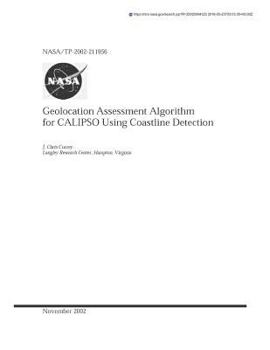Geolocation Assessment Algorithm for CALIPSO Using Coastline Detection
Cloud-Aerosol Lidar Infrared Pathfinder Satellite Observations (CALIPSO) is a joint satellite mission between NASA and the French space agency CNES. The investigation will gather long-term, global cloud and aerosol optical and physical properties to improve climate models. The CALIPSO spacecraft is scheduled to launch in 2004 into a 98.2 inclination, 705 km circular orbit approximately 3 minutes behind the Aqua spacecraft. The payload consists of a two-wavelength polarization-sensitive lidar, and two passive imagers operating in the visible (0.645 mm) and infrared (8.7 - 12.0 mm) spectral regions. The imagers are nadir viewing and co-aligned with the lidar. Earth viewing measurements are geolocated to the Earth fixed coordinate system using satellite ephemeris, Earth rotation and geoid, and instrument pointing data. The coastline detection algorithm will assess the accuracy of the CALIPSO geolocation process by analyzing Wide Field Camera (WFC) visible ocean land boundaries. Processing space-time coincident MODIS and WFC scenes with the coastline algorithm will help verify the co-registration requirement with Moderate Resolution Imaging Spectrometer (MODIS) data. This paper quantifies the accuracy of the coastline geolocation assessment algorithm.Currey, J. ChrisLangley Research CenterALGORITHMS; DETECTION; OPTICAL RADAR; SATELLITE OBSERVATION; AEROSOLS; GEODESY; CLOUDS (METEOROLOGY); INFRARED ASTRONOMY; EARTH ROTATION; HIGH RESOLUTION; GEODETIC ACCURACY; COMPUTERIZED SIMULATION; CAMERAS; EPHEMERIS TIME; RELATIVITY; IMAGING SPECTROMETERS
Format:Paperback
Language:English
ISBN:1723727938
ISBN13:9781723727931
Release Date:January 1
Publisher:Independently Published
Length:28 Pages
Weight:0.20 lbs.
Dimensions:0.1" x 8.5" x 11.0"
Customer Reviews
customer rating | review
There are currently no reviews. Be the first to review this work.













